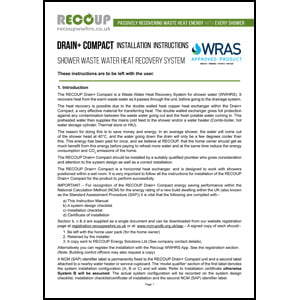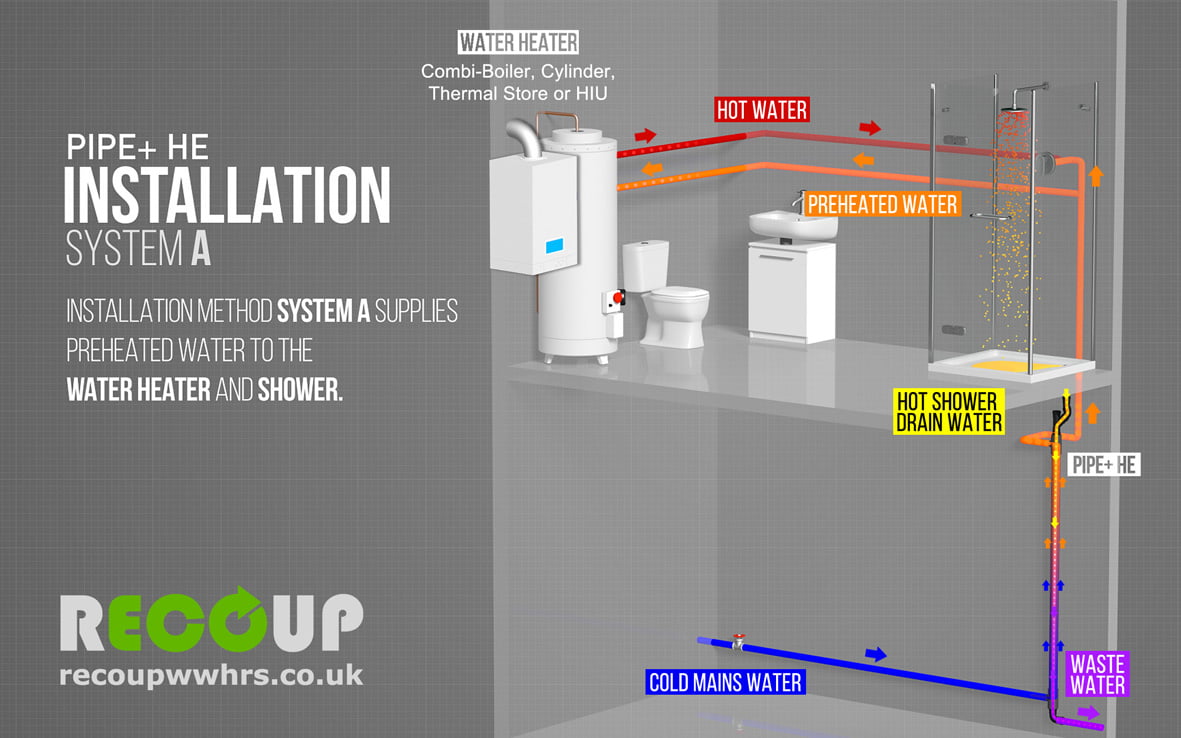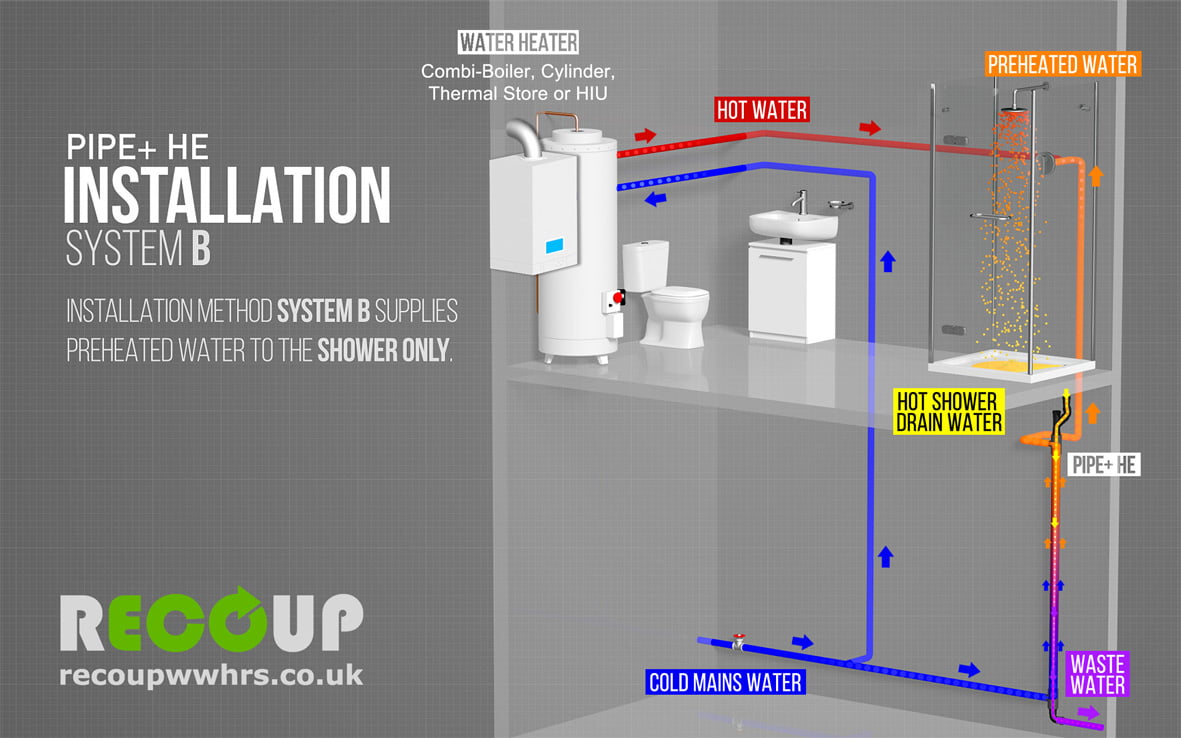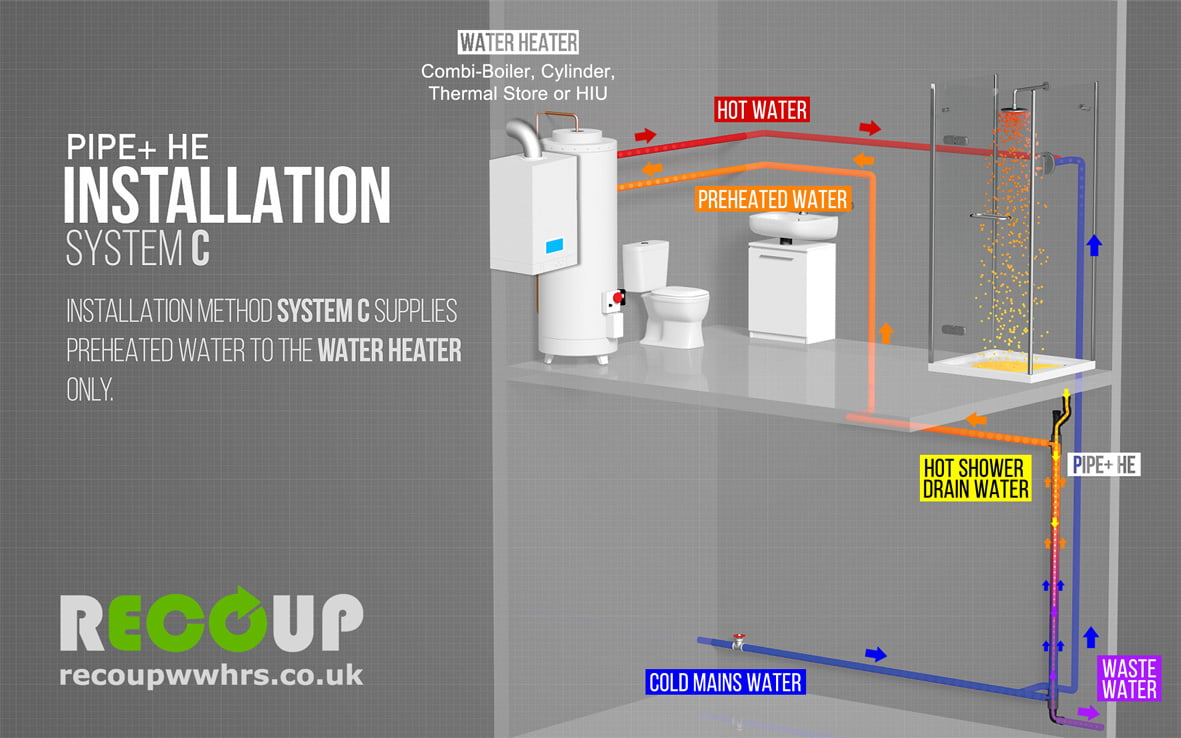Waste Water Heat Recovery for Showers
London Plan 2019: Updated Carbon Emission Factors
In 2018, the Greater London Authority (GLA) announced revisions to the London Plan that affected how energy efficiency models (eg SAP and SBEM) are calculated.
London Plan now requires Energy Strategies to use the upcoming SAP 10 emission factors. This revision went live on 1st of January and the implications of changing the emission factors means a staggering shift away from CHP systems, with gas and solar PV being less effective and all electric heating and hot water systems, such as heat pumps, expected to dominate.
This presents a huge opportunity for WWHRS which can help bridge the compliance gap for developments reliant on CHP systems or enhance the energy strategy, design and cost of electric-based or heat pump systems.
GLA policy states that a minimum 10 % of CO2 saving should be achieved through lean design:
WWHRS is an ideal measure to help achieve this
• Residential apartment new builds
• Residential housing developments
• Hotels
• Student Accommodation
• Build-to-rent
• Gyms & sports centres

In many London Boroughs, specifying WWHRS is cheaper than paying Carbon Offset Payments
WWHRS helps achieve Cost-effective compliance
WWHRS is an ideal energy efficiency measure for new-build housing, apartments, hotels and student accommodation builds. Showering can account for around 50% of a dwellings’ hot water usage, however, this can be significantly higher for hotels and student accommodation projects.
WWHRS is capable of reducing the energy required to heat hot water for showers by up to 55%.
The current version of the London Plan requires an on site carbon reduction target of 35% and already encourages developers to consider the energy hierarchy:
Be Lean: Reduce energy demand; Be Clean: Supply energy efficiently; Be Green: Use renewable energy
These steps dictate construction specifications, in some instances the development layouts and of course, the build cost.
WWHRS is one of the most cost-effective SAP measure available, and can be used to reduce primary energy demand, while also mitigating GLA Carbon Offset Payments












